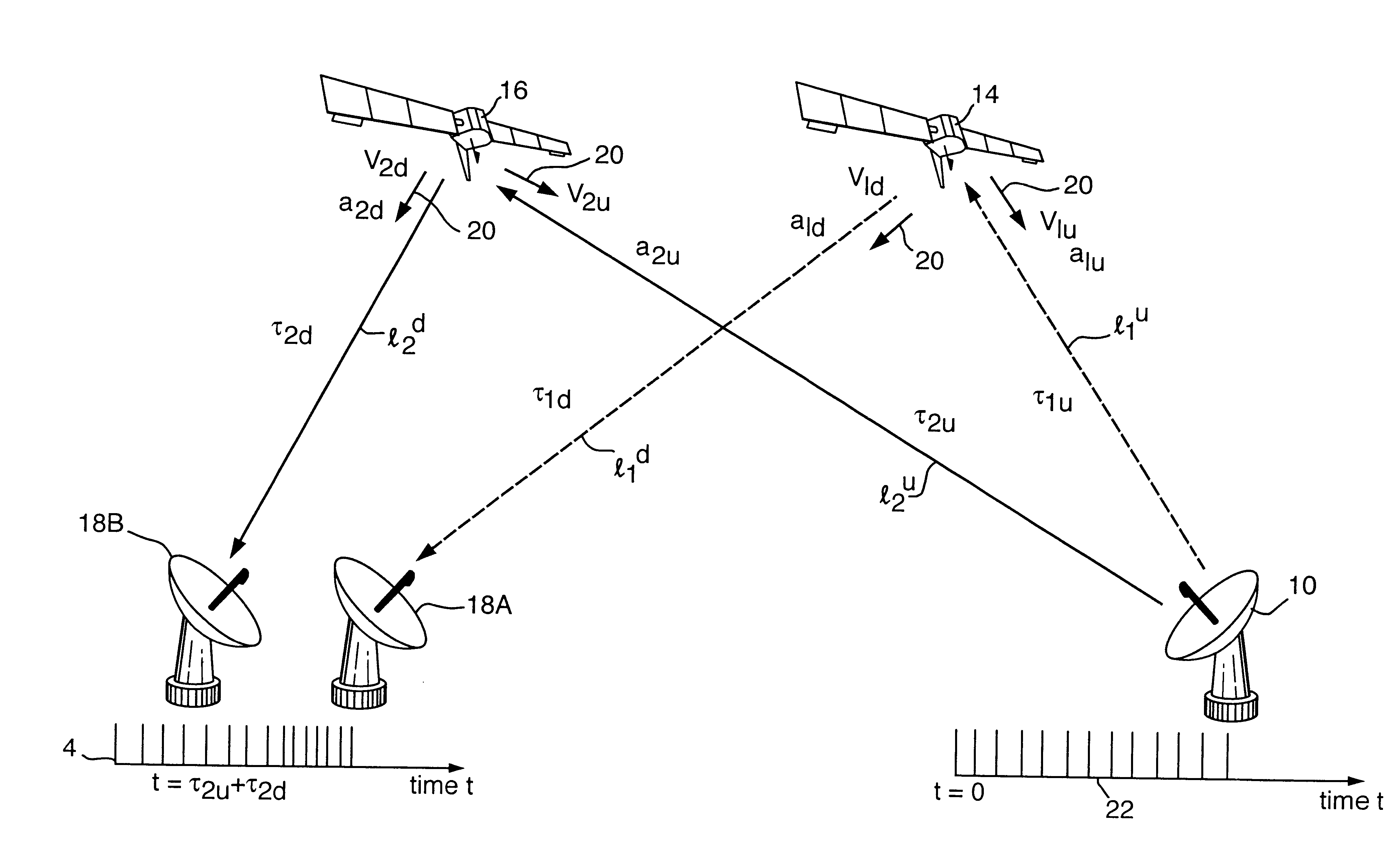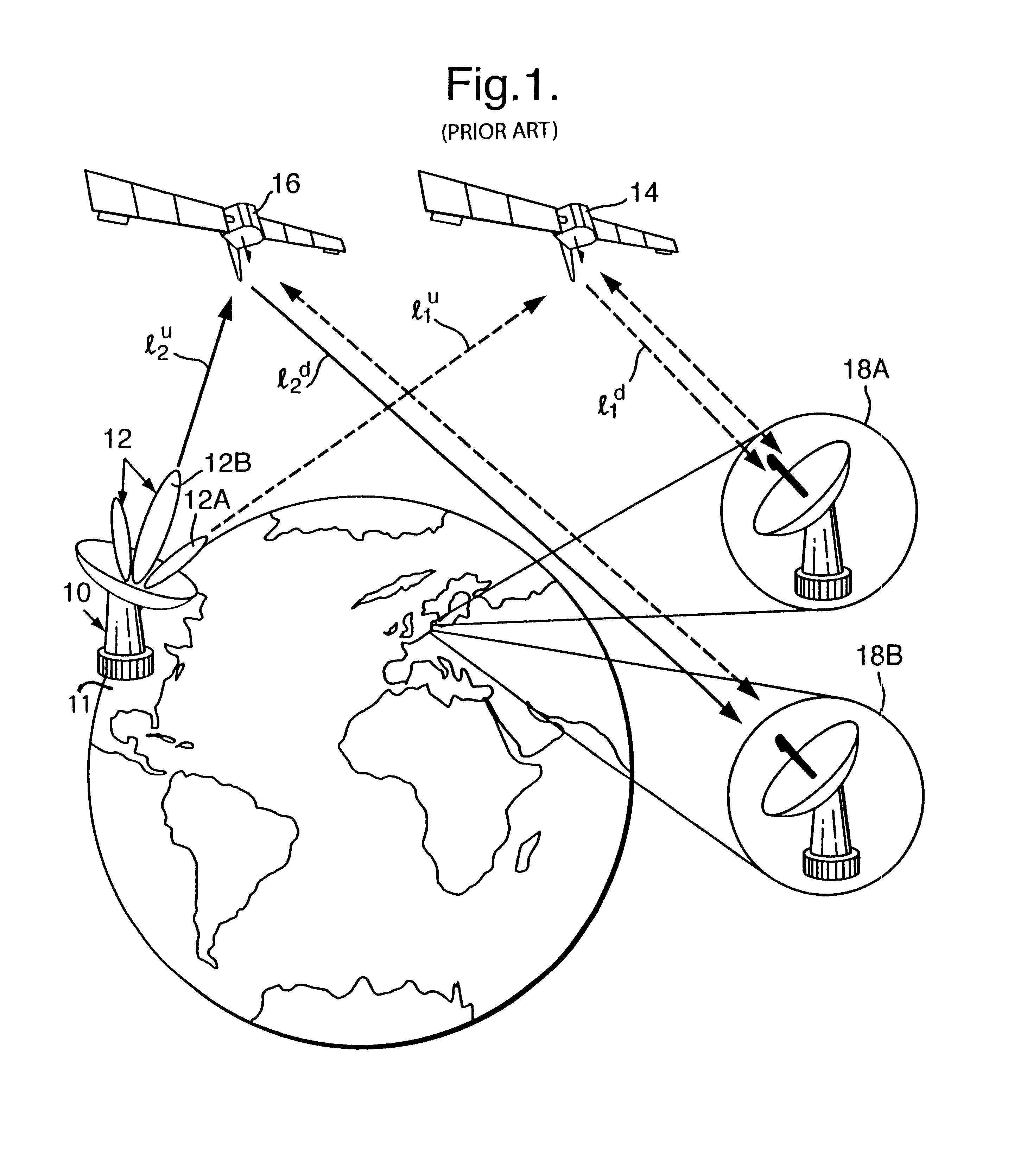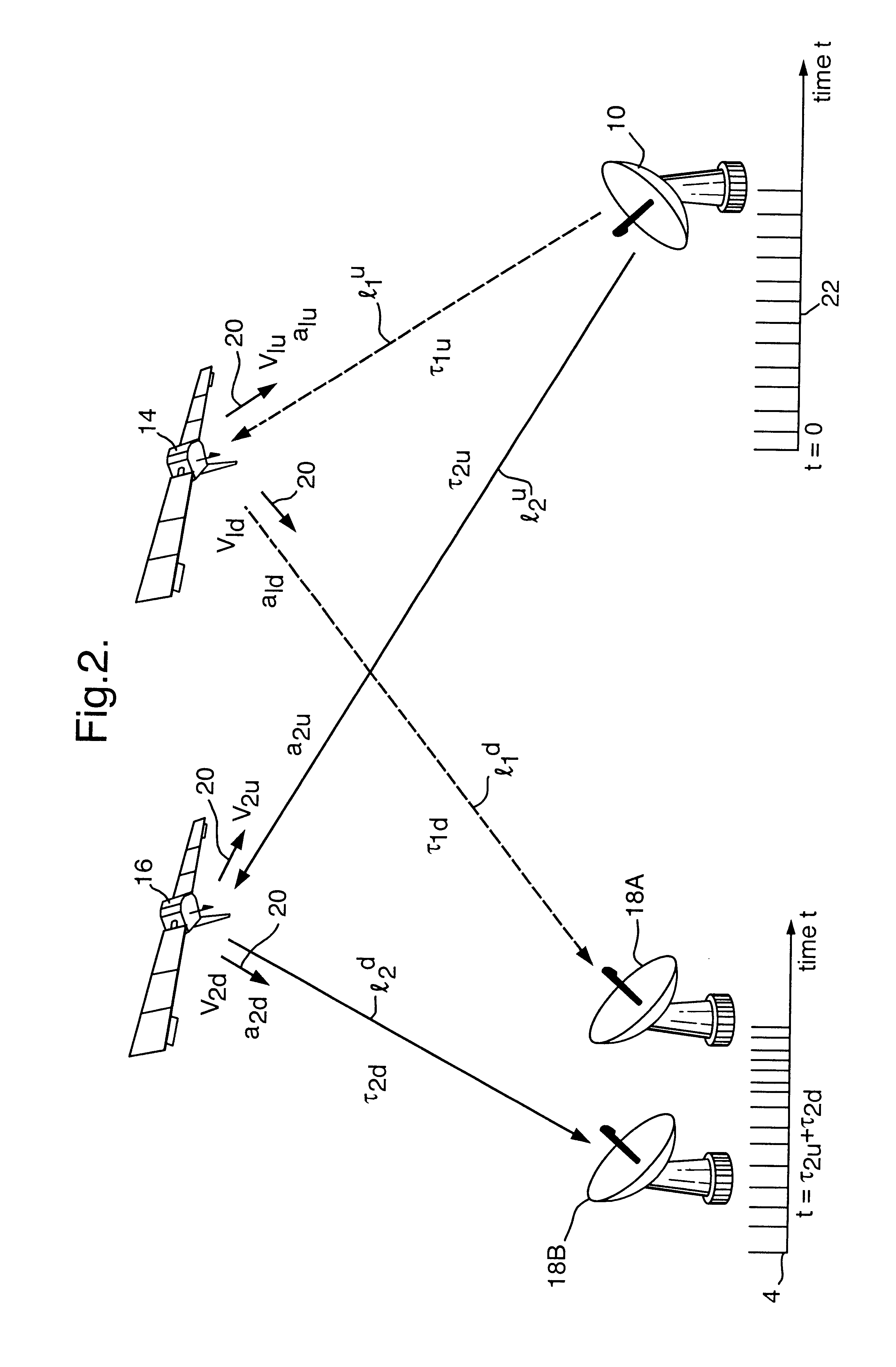Method and apparatus for locating the source of an unknown signal
a technology of unknown signals and methods, applied in direction finders, direction finders using radio waves, instruments, etc., can solve problems such as the inclination of satellite orbits in bandwidth limitations
- Summary
- Abstract
- Description
- Claims
- Application Information
AI Technical Summary
Problems solved by technology
Method used
Image
Examples
Embodiment Construction
Referring to FIG. 1, an unknown transmitter 10 located in the United States of America 11 generates a signal which causes interference with satellite communications. The transmitter 10 has a radiation intensity pattern 12 with a sidelobe 12A directed to a first satellite 14 in a geostationary orbit, to which its signal propagates along a first uplink path l.sub.1.sup.u (dotted line). It also has a radiation pattern main lobe 12B directed to a second satellite 16 in such an orbit; its signal propagates along a second uplink path l.sub.2.sup.u to the satellite 16 and produces interference with communications signals using the latter. The unknown signal frequency is determined by spectrum analysis equipment which routinely monitors satellite channels. A typical communications satellite operating at Ku band (11-14 GHz) has 16 channels each 36 MHz wide and each capable of carrying 100 communications signals. The superscript "u" to path references l.sub.1.sup.u and l.sup.2.sup.u denotes u...
PUM
 Login to View More
Login to View More Abstract
Description
Claims
Application Information
 Login to View More
Login to View More - R&D
- Intellectual Property
- Life Sciences
- Materials
- Tech Scout
- Unparalleled Data Quality
- Higher Quality Content
- 60% Fewer Hallucinations
Browse by: Latest US Patents, China's latest patents, Technical Efficacy Thesaurus, Application Domain, Technology Topic, Popular Technical Reports.
© 2025 PatSnap. All rights reserved.Legal|Privacy policy|Modern Slavery Act Transparency Statement|Sitemap|About US| Contact US: help@patsnap.com



